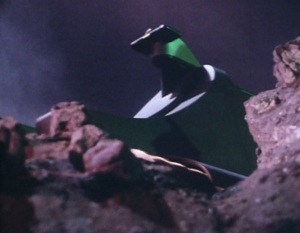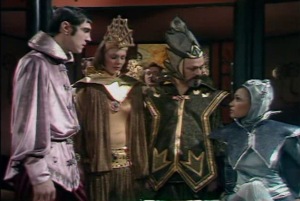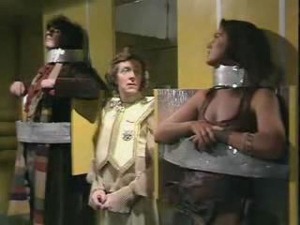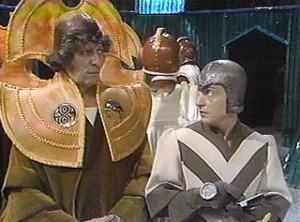If any evidence were needed that Doctor Who and Sherlock Holmes are basically the same character, this is it. (On a topical note: how about Benedict Cumberbatch to replace Matt Smith?) The Victorian London setting is dark and dangerous, and the Doctor absolutely falls neatly into the role of the sleuthy detective, with Leela providing the muscle.
But this isn’t a case of a logically minded thinker unravelling a complex hoax, it is an otherworldly time-traveller thwarting another otherworldly time-traveller from unleashing the power of a magic box. The locals have got no chance. Nevertheless, it is amusing to see how easily the Doctor is accepted into the role of police helper – he has such a strong presence he can simply assume authority in any situation – and it’s done with wit and charm (psychic paper not required).

The disfigured face of the villain is only seen for a few brief moments, but it leaves quite an impression.
Again, this story mixes humour with horror, with bizarre and monstrous foes ranging from oversized rats to undersized men, and amusing exchanges of dialogue such as Leela asking what the name of the local tribe is, and the Doctor replying “cockneys”.
However, there is an unsophisticated air of mild racism present here, not the least of which with the obviously English man made-up with false eyelids to look Chinese and put on a “me so solly” type accent, while characters refer to him as “yellow”, etc. I found it quite uncomfortable in parts, and that’s a shame, as I think Robert Holmes’ scripts normally rise above such things.
Elsewhere, two of the supporting characters, Professor Litefoot and the theatre owner Mr. Jago, are well-written and performed and I could probably watch a whole episode of them blustering about and getting into scraps. I also enjoyed Leela reacting to things completely alien to her and failing to be a ‘proper lady’.
It’s a good setting, with a moody visual style (although at times I found it too dark to see what was happening). Another six-parter, the plot is nothing special, but thanks to some sharp dialogue and another stellar performance from Tom Baker, it is never less than watchable.























